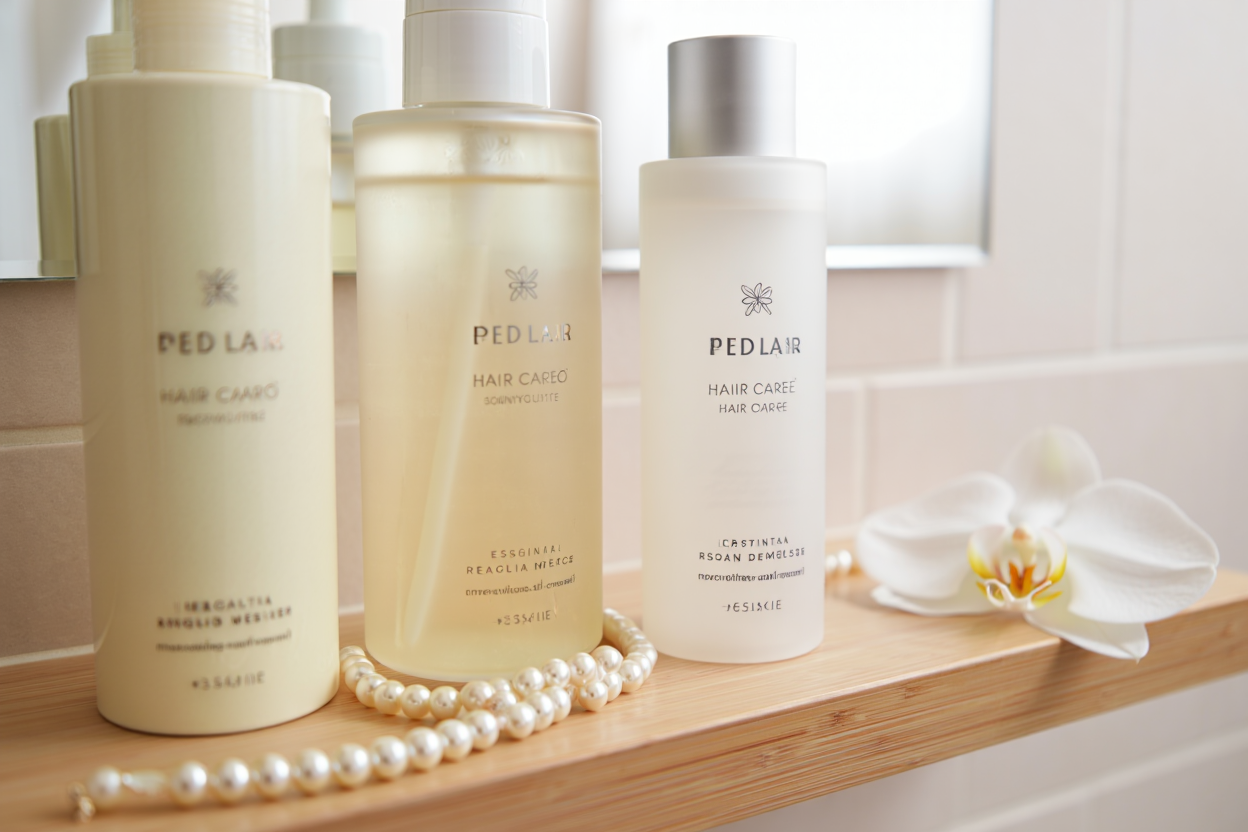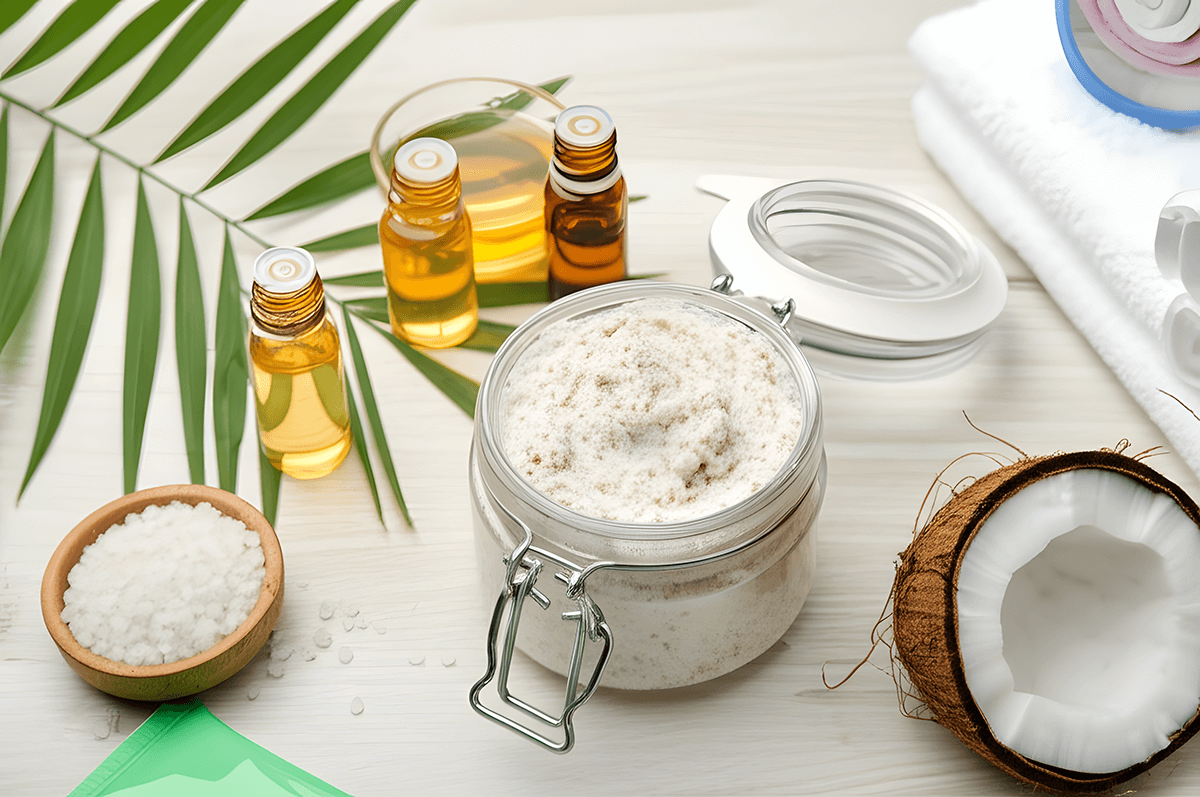Introduction: The Beauty of Minimalism in Hair Care
In an era where beauty routines are often overwhelming, with countless products promising miracles, the concept of «capsule hair care» is gaining momentum. Inspired by the minimalist approach of capsule wardrobes, capsule hair care focuses on using only the essentials to maintain healthy, beautiful hair. By streamlining your routine to include only shampoo, conditioner, a hair mask, and leave-in care, you can eliminate unnecessary steps while still achieving great results.
This guide will help you build the perfect minimalist hair care routine, ensuring your hair gets the nourishment it needs without the excess.
The Problem with Overcomplicated Hair Care Routines
The beauty industry constantly markets new hair care products, making it easy to believe that we need a dozen different items for healthy hair. However, using too many products can lead to buildup, weigh hair down, and even cause irritation.
Common Problems with Excessive Hair Care Routines:
- Product overload: Too many styling products and treatments can leave hair feeling heavy and greasy.
- Conflicting ingredients: Some ingredients don’t work well together and may even cancel each other out.
- Scalp imbalance: Overuse of certain treatments can cause the scalp to become too oily or too dry.
- Wasted money: Buying unnecessary products can be costly without delivering noticeable benefits.
- Time-consuming routines: The more steps in your regimen, the more time and effort it requires, making it difficult to maintain consistently.
By adopting a minimalist approach, you can simplify your routine while maintaining or even improving hair health.

Step 1: Choosing the Right Shampoo
Shampoo is the foundation of any hair care routine. It cleanses the scalp and removes dirt, oil, and product buildup. However, not all shampoos are created equal.
How to Choose a Minimalist Shampoo:
- Sulfate-free formulas: Sulfates can strip hair of natural oils, leading to dryness and irritation. Opt for gentle, sulfate-free shampoos.
- Hydration vs. Clarifying: If you wash your hair frequently, choose a hydrating shampoo to prevent dryness. For occasional deep cleaning, a clarifying shampoo can help remove buildup.
- pH-balanced formulas: A shampoo with a balanced pH (around 4.5-5.5) helps maintain scalp health.
- Minimal ingredients: Look for shampoos with short ingredient lists that focus on nourishing elements rather than unnecessary additives.
- Fragrance-free options: If you have a sensitive scalp, avoiding artificial fragrances can reduce irritation and allergic reactions.
How Often Should You Wash Your Hair?
Washing frequency depends on hair type and lifestyle:
- Oily hair: Every other day or as needed.
- Dry hair: Once or twice a week to retain moisture.
- Curly hair: Less frequent washing (once a week or less) to preserve natural oils.
- Fine hair: More frequent washing to prevent it from looking limp or greasy.
- Active lifestyle: If you exercise daily, consider co-washing (using only conditioner) between shampoo days to avoid excessive dryness.
Step 2: Conditioner – Essential for Hydration and Protection
Conditioner helps replenish moisture lost during washing and smooths the hair cuticle, reducing frizz and tangles.
How to Choose a Minimalist Conditioner:
- Silicone-free (if possible): While silicones add shine, they can also cause buildup over time. Opt for natural conditioning agents like plant oils and proteins.
- Protein vs. Moisture Balance: If hair feels weak or brittle, a protein-based conditioner can help strengthen it. If hair is dry, opt for a moisturizing formula.
- Lightweight for fine hair, richer for thick hair: Choose a conditioner suited to your hair’s needs.
- Multipurpose formulas: Some conditioners can double as leave-in treatments, reducing the need for additional products.
How to Use Conditioner Effectively:
- Apply to mid-lengths and ends: Avoid the scalp to prevent greasiness.
- Let it sit for a few minutes: Allow time for absorption before rinsing.
- Rinse with cool water: This helps seal the cuticle for added shine.
- Use as a co-wash: If your hair is very dry or curly, you can occasionally wash with conditioner instead of shampoo to maintain moisture.
Step 3: Hair Masks – A Weekly Deep Treatment
A hair mask is an intensive treatment designed to address specific hair concerns. Unlike daily conditioners, masks penetrate deeper, offering more nourishment.
How to Choose a Minimalist Hair Mask:
- Look for targeted treatments: Hydration, repair, or scalp care, depending on your needs.
- Avoid excessive ingredients: Stick to nourishing oils, proteins, and botanical extracts.
- Use once a week: Overuse of protein-based masks can lead to stiffness, while too much moisture can cause limp hair.
- Opt for natural ingredients: Coconut oil, shea butter, and aloe vera provide excellent deep conditioning without synthetic additives.
DIY Minimalist Hair Mask Recipe:
- 2 tablespoons coconut oil
- 1 tablespoon honey
- 1 mashed banana Mix and apply for 20 minutes before rinsing.
Step 4: Leave-In Care – The Final Step for Protection
Leave-in products provide ongoing nourishment and protection. They help detangle, reduce frizz, and shield hair from environmental damage.
How to Choose a Minimalist Leave-In Product:
- Opt for lightweight formulas: Heavy products can weigh hair down.
- Heat protection (if using heat styling): Look for ingredients like argan oil or silk proteins.
- Multipurpose benefits: A leave-in that hydrates, protects, and smooths all in one is ideal.
- Alcohol-free formulas: Avoid products with drying alcohols that can lead to frizz and breakage.
How to Apply Leave-In Products:
- Apply to damp hair: This helps lock in moisture.
- Focus on the ends: Avoid the roots to prevent greasiness.
- Use sparingly: A small amount goes a long way.
Expanding Your Capsule Hair Care Routine
- Understanding Hair Porosity: Low-porosity hair benefits from lightweight hydration, while high-porosity hair requires more intensive moisture.
- The Role of Scalp Massage: Stimulating blood flow can encourage hair growth and distribute natural oils.
- Seasonal Hair Care Adjustments: In winter, hair tends to be drier, requiring more hydration, while in summer, lighter products may be preferable.
- Protective Hairstyles: Reducing mechanical damage with styles like braids or buns can help retain length and health.
- Natural vs. Synthetic Ingredients: While natural oils and botanical extracts are beneficial, some synthetic ingredients like panthenol and ceramides can enhance hair health.
- The Impact of Hard Water: If you live in an area with hard water, using a clarifying rinse (like apple cider vinegar) can help remove mineral buildup.
- The Importance of Diet and Hydration: Hair health starts from within, and eating a balanced diet rich in vitamins and minerals, along with staying hydrated, plays a crucial role.
- Using Silk Pillowcases: Reducing friction while you sleep can help minimize breakage and frizz.
- Trimming Regularly: Even with a minimal routine, split ends need to be trimmed to maintain healthy hair.
Conclusion: Embracing Simplicity for Healthier Hair
Capsule hair care is all about focusing on quality over quantity. By selecting the right shampoo, conditioner, mask, and leave-in product, you can achieve strong, healthy hair without unnecessary clutter. This minimalist approach saves time, money, and effort while delivering beautiful results.
Are you ready to simplify your hair care routine? Start with these four essentials and experience the benefits of less-is-more hair care!



